A diverse and inclusive art world in the making
by Vatsala SethiDec 26, 2022
•make your fridays matter with a well-read weekend
by Avani Tandon VieiraPublished on : Jun 03, 2025
In a wooded clearing, a solitary figure sits on a swing. To his left, a few metres away, a couple embraces, limbs indistinguishable. To his right, at a height, a pile of sleeping bodies. Just past a tree, in the shadows, two people walk hand in hand. Each permutation of bodies brings new meaning to the space. Is this a site of play? Of desire? Of rest? Drenched in a nocturnal green and rendered in thick, directional brush strokes, the scene is as much about space as it is about the corporeal ways in which it can be altered. This is painter Salman Toor’s (b. 1983) A Meeting Place (2024), part of his solo exhibition Wish Maker, currently on view at Luhring Augustine in New York.
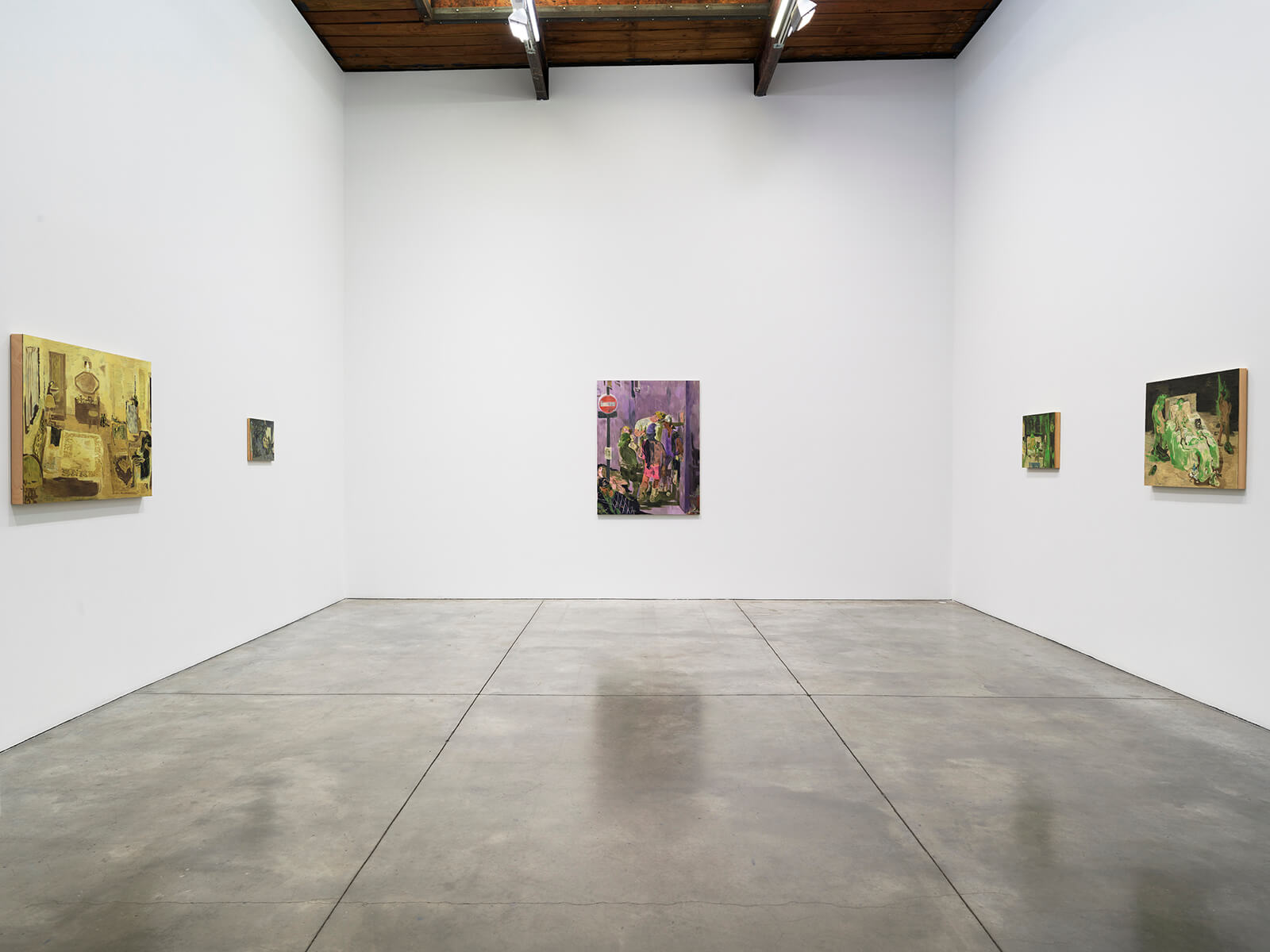
Wish Maker marks the first major presentation of Toor’s work since his breakout institutional show at the Whitney in 2020, a moment that catapulted the New York-based, Pakistan-born painter into art world stardom. His largest to date, the show is set across the gallery’s two locations, with 19 oil paintings on view in Chelsea and a further 44 works on paper on display in Tribeca. Encountering this substantial corpus, spaced generously across the gallery’s walls, is like stepping into a convergence of the painter’s many worlds. Toor takes the viewer into New York bedrooms and Lahori public parks, crowded bars and lonely cemeteries, street corners and hospitals, bringing us a world of communal life in which outsiderness, joy, violence, and safety all intersect. The range of works on display is considerable – from compact, single-subject canvases that measure less than a foot across to works that are four feet tall and richly peopled. Bringing them together is a distinct painterly hand – marked by rich monochromatic palettes, luscious layers of paint and a singular attention to detail.
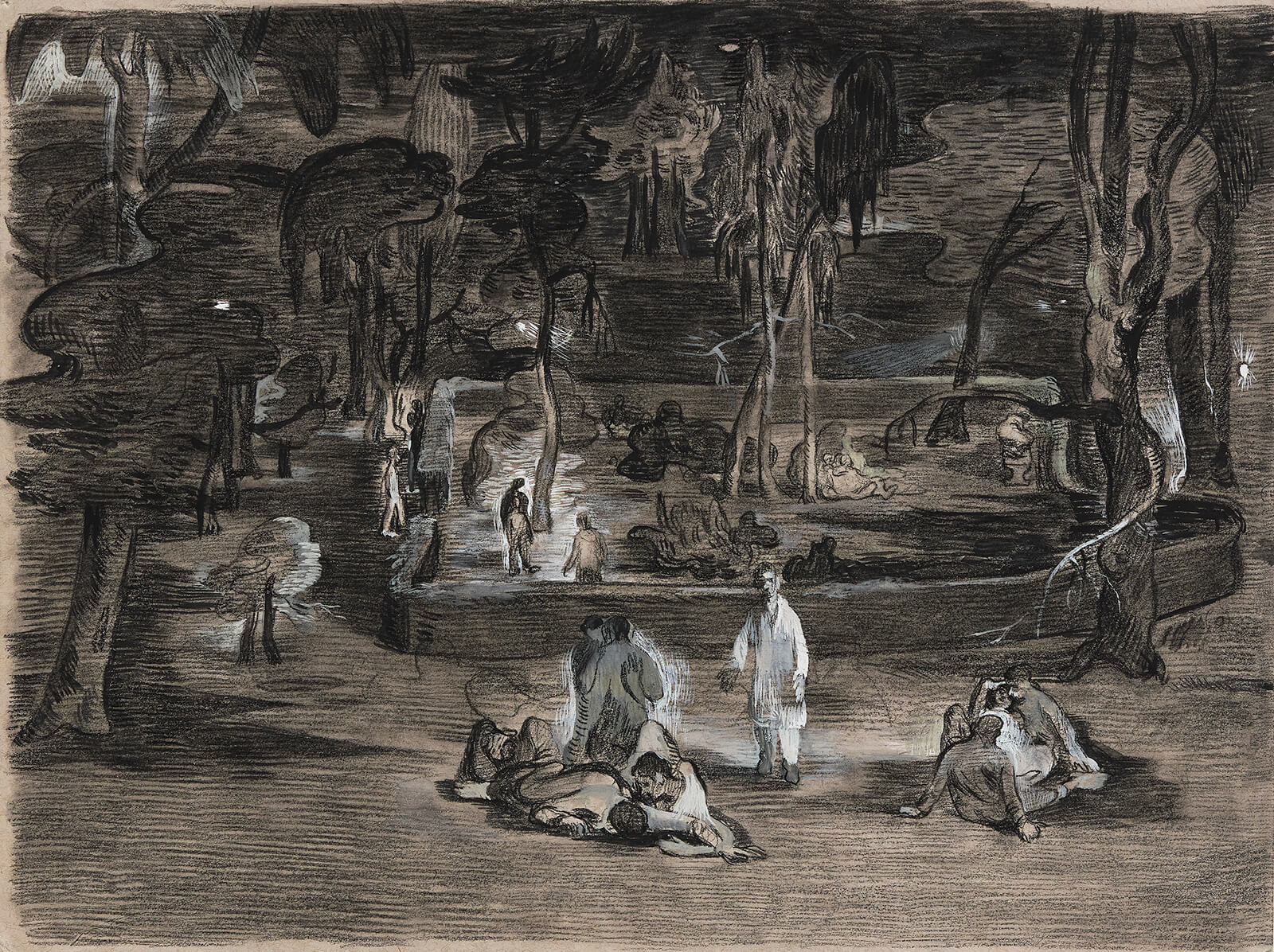
Speaking in 2011 on the triangulation of bodies, assembly and politics, Judith Butler urges us to “think about bodies together, what holds them there, their conditions of persistence and of power”. In Wish Maker, as in much of Toor’s work, there is a preoccupation with bodies – queer, brown, diasporic – and their relational meanings, both internal and external. In Foliage (2024), a work on paper on display in Tribeca, we are presented with another wooded space, this time at closer quarters. In muted nighttime tones, male figures recline in various acts of communion – more and less clothed, more and less explicitly sexual. Their dress is identifiably South Asian, the low wall behind them reminiscent of a work titled Night Cemetery (2025, also on view). Rendering forms of assembly that are eked out in forbidden spaces, and under the cover of night, Toor prompts a consideration of the spatial politics of desire, and the transgressive, if still fragile, forms of assembly that resist it.
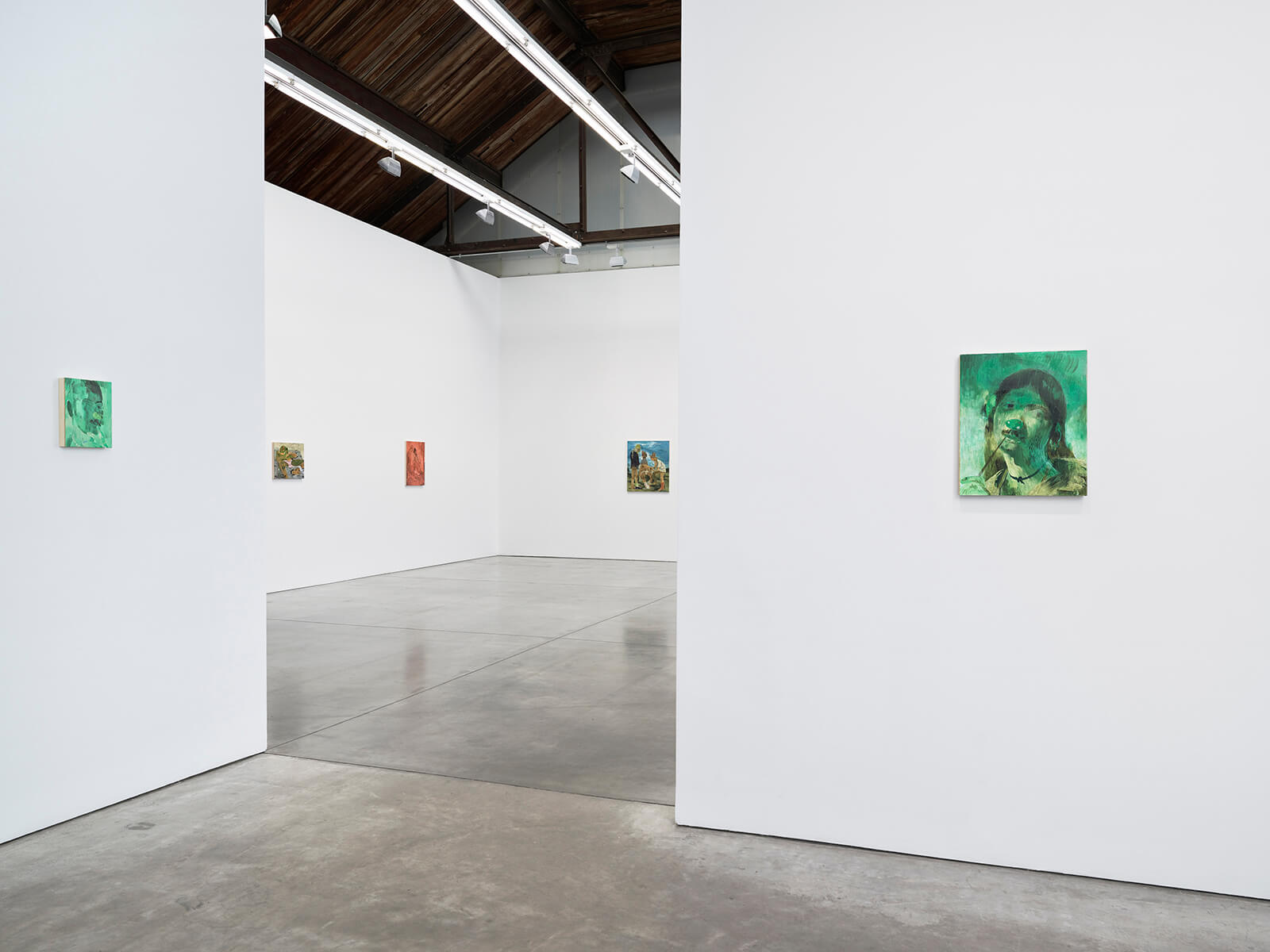
If Toor’s paintings speak of the possibilities of physical assembly, they also deal with less obvious, and less immediate, forms of togetherness. Framing the entrance to Wish Maker’s Chelsea location, for instance, are two small, green paintings, each featuring a male figure gazing contemplatively out of the frame. Titled Dreamy Boy (2024) and The Scholar (2024), the works feature subjects that are at once delicate and unreal – here a clownish nose, there an outsized ear, between them, knowing eyes that suggest an ongoing exchange, one to which the viewer is not fully privy. In The Scroller (2024) (a work that will be familiar to anyone who has seen Toor’s internet-famous Bedroom Boy), similarly, a young, partially clothed man holds a smartphone in one hand, the other between his legs. The presence, through the screen, of an invisible other – perhaps a lover on a video call or a stranger in a video – is unmistakable, the contemporary body always already in the presence of others, constituted, to return to Butler, “in a sociality that exceeds us”.
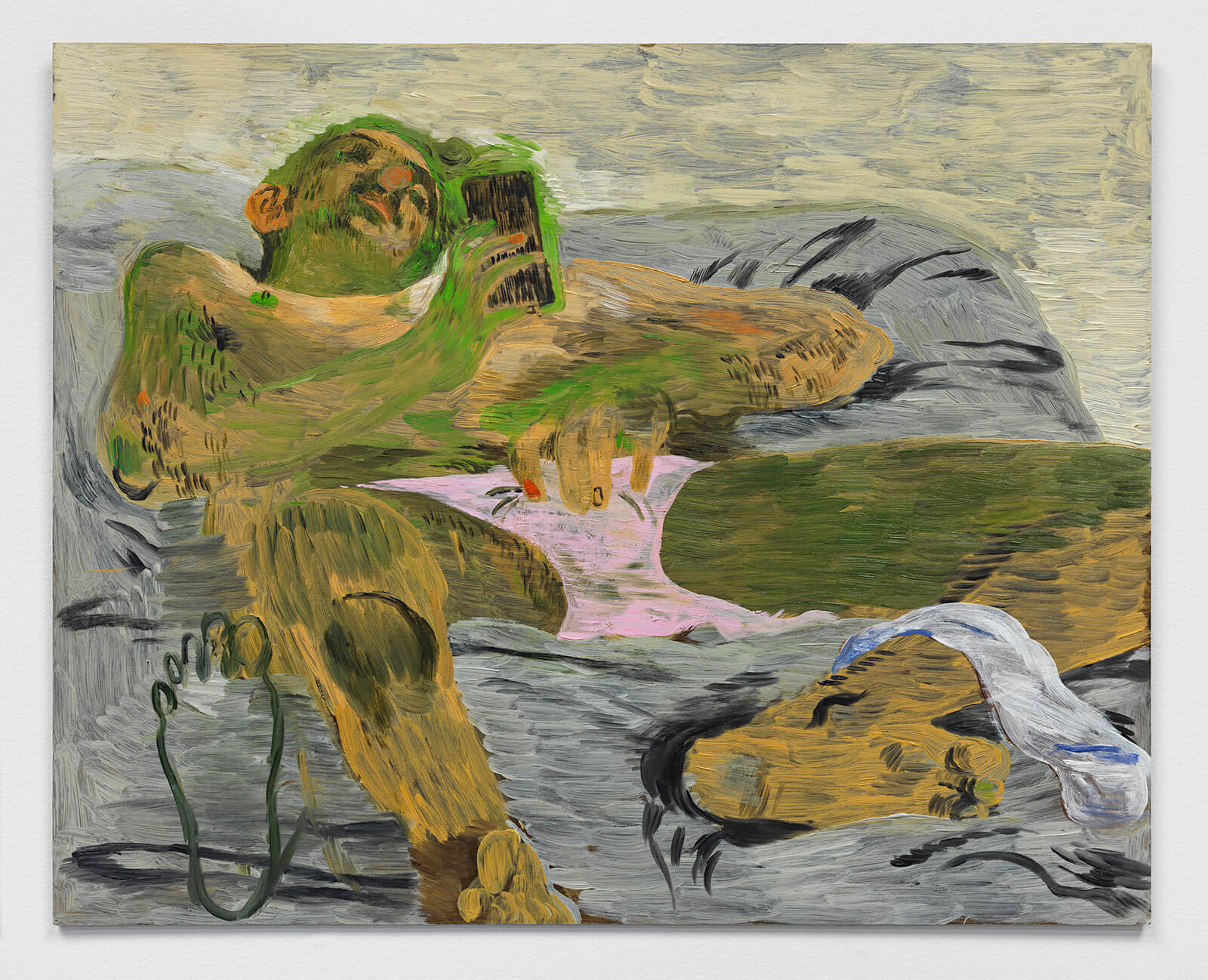
While Toor’s work reflects an investment in a politics of assembly, it is also deeply interested in the possibilities of dismemberment and reassembly. Wish Maker is staged to disallow comfort, switching registers rapidly so that the valence of similar bodies rendered in a similar style swings between the idyllic and the macabre: in one corner of the gallery, a moonlit meeting of bodies, in another, a pile of dismembered heads (Dead Dad Puddle (2024)). Among the configurations that the artist produces on the canvas are “fag puddles”, described in the exhibition literature as “leaky and often perversely opulent heaps of limbs, clothing and objects”. In Fag Puddle with Hat (2024), a male body, naked from the waist down, lies on the floor, feet towards the viewer. Where its head should be is a darkness, topped by a wide-brimmed hat, complete with ribbon and jaunty feather. Two sleeping, disembodied heads, a single hand, a single sock and a ball complete the arrangement; a bizarre still life of mismatched parts.
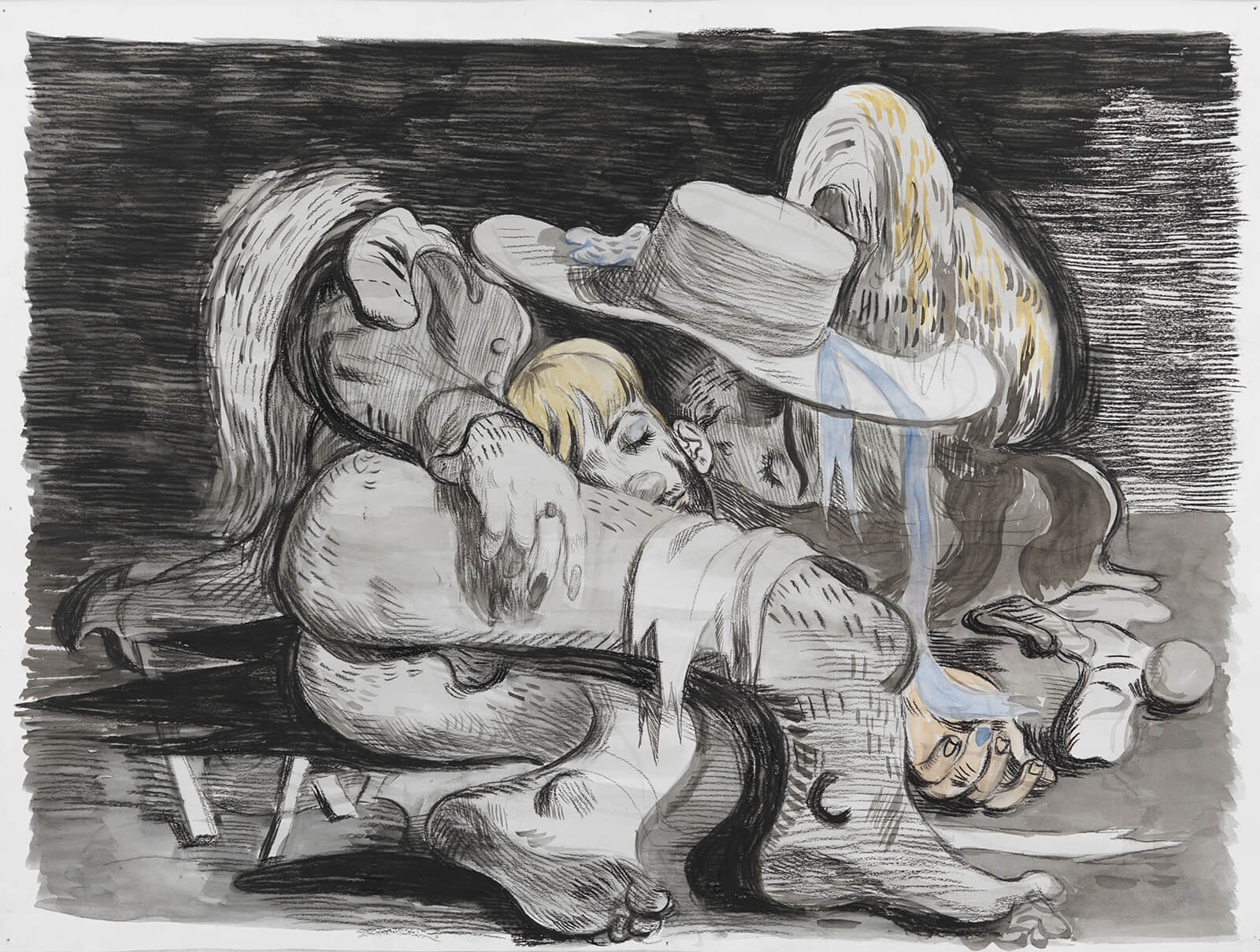
This is not to say that Toor’s ‘puddles’ are violent constructions. In an interview for the Whitney Museum from 2020, he remarked that “there’s a poetry to seeing parts of bodies next to each other, in ways they wouldn’t be if they were joined together”. If there is dismemberment, there is also a re-membering – a playful, if still considered, reconfiguration of people and things. By taking apart and putting together bodies that are so often the subject of systemic violence, Toor leans into an ungovernability of self and spirit, inventing new visual modes of speaking of and through the body.
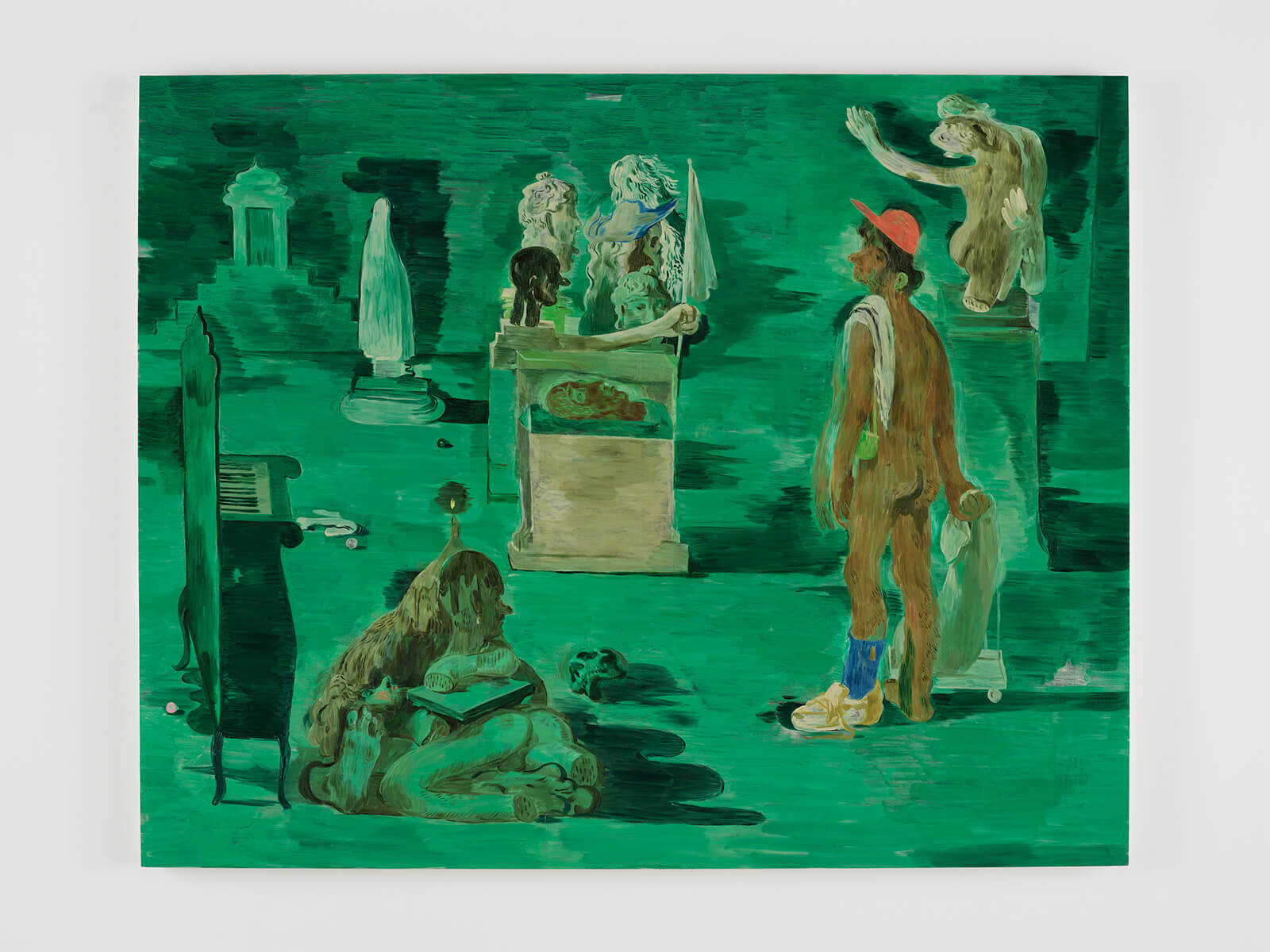
This engagement with re-assembly extends from the personal to the institutional, addressing the sites that perform sanitised, yet deeply violent, versions of the same act. In Collection (2025), a nude figure – wearing only a single sock and shoe and a hat – turns its melancholic gaze onto a museum-like space, populated by vitrines and sculptures on pedestals. In a corner, a “puddle” of limbs undercuts the visual logic of the space. In contrast with the aseptic displays of Western collecting institutions, often born of profound acts of colonial dislocation, Toor presents his own configuration of forms: disorderly, unsightly, resolutely indulgent.
The framework of poetry is, in many ways, a valuable one within which to consider Toor’s practice. The artist’s work is fundamentally concerned with how bodies commune, the configurations that emerge in these moments of contact and the possibilities they make visible. Wish Maker presents patterns of existence that are at once intimate, transgressive and everyday: joyful gatherings, clandestine meetings, uncertain solitude. In this endeavour, reality is a starting point and not a limit. Toor looks from the forms of sociality that define our existence to modes of association that may exceed them. In the lush landscapes of the artist’s work, there is room for desire, rest, play and poetry.
The views and opinions expressed here are those of the author and do not necessarily reflect the official position of STIR or its editors.
Salman Toor’s solo exhibition ‘Wish Maker’ is on view from May 2 – June 21, 2025, at Luhring Augustine, New York.
by Maanav Jalan Oct 14, 2025
Nigerian modernism, a ‘suitcase project’ of Asian diasporic art and a Colomboscope exhibition give international context to the city’s biggest art week.
by Shaunak Mahbubani Oct 13, 2025
Collective practices and live acts shine in across, with, nearby convened by Ravi Agarwal, Adania Shibli and Bergen School of Architecture.
by Srishti Ojha Oct 10, 2025
Directed by Shashanka ‘Bob’ Chaturvedi with creative direction by Swati Bhattacharya, the short film models intergenerational conversations on sexuality, contraception and consent.
by Srishti Ojha Oct 08, 2025
The 11th edition of the international art fair celebrates the multiplicity and richness of the Asian art landscape.
 surprise me!
surprise me!
make your fridays matter
SUBSCRIBEEnter your details to sign in
Don’t have an account?
Sign upOr you can sign in with
a single account for all
STIR platforms
All your bookmarks will be available across all your devices.
Stay STIRred
Already have an account?
Sign inOr you can sign up with
Tap on things that interests you.
Select the Conversation Category you would like to watch
Please enter your details and click submit.
Enter the 6-digit code sent at
Verification link sent to check your inbox or spam folder to complete sign up process



by Avani Tandon Vieira | Published on : Jun 03, 2025
What do you think?